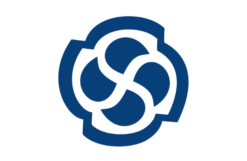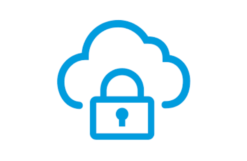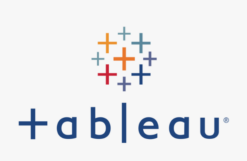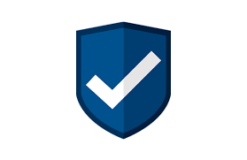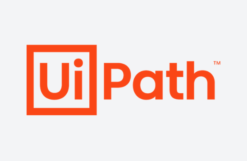Duration: 4 days – 28 hrs
Overview
The Laravel Framework Fundamentals training course is designed to equip participants with a solid understanding of the open-source PHP class library known as Laravel. This framework is specifically engineered to streamline the process of creating dynamic websites, web applications, and web services. By abstracting the complexities of various common web development tasks, such as database interactions, authentication, and templating, Laravel empowers developers to concentrate on tailoring applications to their unique specifications.
Objectives
- Apply best practices in web application development
- Develop scalable enterprise web applications using the Laravel Framework
- Implement the MVC design pattern to create maintainable applications
- Access various databases in a vendor-independent way
- Validate and pre-populate forms automatically
- Secure your application through proper authentication and authorization
Audience
- Web Developers: Developers with varying levels of experience in web development who want to learn how to use Laravel to build dynamic websites and web applications more efficiently.
- PHP Developers: PHP developers looking to explore and master Laravel as a powerful tool for creating feature-rich and modern web applications.
- Software Engineers: Software engineers interested in expanding their skill set and gaining proficiency in using Laravel to streamline web development processes.
- Frontend Developers: Frontend developers who want to gain a comprehensive understanding of the backend development process using Laravel to create seamless frontend-backend integrations.
- Web Application Architects: Architects who want to explore how Laravel’s MVC architecture and built-in features can be leveraged to design and build scalable and maintainable web applications.
- Project Managers: Project managers who want to gain insights into the Laravel framework to better understand the development process, timelines, and capabilities for effective project management.
- IT Professionals: IT professionals seeking to enhance their technical expertise and broaden their skill set by learning how to use Laravel for building web applications.
- Technical Leads: Technical leads who want to ensure their teams are equipped with the latest tools and techniques for efficient web development using Laravel.
- Entrepreneurs and Business Owners: Entrepreneurs and business owners aiming to gain a foundational understanding of Laravel to effectively communicate with development teams and make informed decisions regarding web projects.
Pre- requisites
- Basic programming knowledge and familiarity with web development concepts are recommended for this Laravel Framework training course.
Course Content
Getting Started with Laravel Framework
- What is the Laravel Framework?
- The MVC Architectural Pattern
- Features of Laravel
Quickstart
- Installing Laravel
- Creating a Laravel Application
- Configuring Your Web Server for Laravel
- Using PHP’s Built-In Web Server
Routing
- What is Routing?
- Route Files
- Defining Routes
- Redirecting Routes
- Routing to Views
- Acquiring Route Parameters
Controllers
- Creating a Controller
- Creating a Route to a Controller
- Creating a Resource Controller
- Creating a Route to a Resource Controller
- Viewing the List of Routes
- Adding Methods to a Resource Controller
Requests and Responses
- Request
Getting the Request Object
Getting Request Parameters
Processing File Uploads
Getting the Request Method
Getting Cookie Data
- Response
Returning a View
Returning a String
Returning JSON Data
Specifying the Status Code
Specifying Response Header
Sending Files to the Client
Redirecting
Adding Cookie Data
Views
- Creating Views
- Passing Data from Controllers to Views
- Using Blade Statements
Configuration
- Standard Configuration Files
- Accessing Application Configuration
- Accessing Environment Configuration
Sessions
- Configuring Sessions
- Storing Data
- Retrieving Data
- Flashing Data
- Deleting Data
Forms
- Creating Basic Forms
- Protecting Against CSRF
- Validating Form Input
Database Access and Eloquent ORM
- Specifying Database Configuration
- Using Migrations
- Running SQL
- Building Queries using Query Builder
- Creating Models using Eloquent ORM
CRUD
- Review: Creating a Resource Controller
- Displaying All Resources
- Displaying and Processing the Create Form
- Displaying a Single Resource
- Displaying and Processing the Edit / Update Form
- Adding Delete Functionality
- Putting It All Together
RESTful APIs
- Understanding REST APIs
- Creating API Routes and Controllers
Implementing CRUD Operations
- Review: Creating a Resource Controller
- Displaying All Resources
- Displaying and Processing the Create Form
- Displaying a Single Resource
- Displaying and Processing the Edit / Update Form
- Adding Delete Functionality
- Putting It All Together
Security
- Introduction
- Setting Up Authentication
- Using Authentication
- Adding Authorization Logic
- Putting It All Together
Error Handling and Logging
- Manually Generating an HTTP Error
- Creating Custom HTTP Error Pages
- Disabling Debugging Information
- Writing Log Messages
Blade Templates
- Defining a Layout
- Using a Layout within Views
- Including Sub-views


